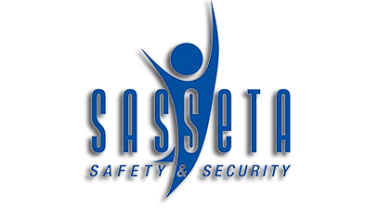How to dive into CETA funded learnership

To dive into a CETA-funded learnership (Construction Education and Training Authority), you’ll want to follow a few key steps to find the right opportunity and apply successfully.
These learnerships are aimed at helping individuals get practical and theoretical training in the construction and built environment sector in South Africa.
🔎 Step 1: Understand What a CETA Learnership Is
A CETA learnership combines:
- Theoretical training (classroom-based or online)
- Practical work experience (on-site training with a registered employer)
It typically leads to a registered qualification (NQF level) and is aligned with the Sector Education and Training Authority (SETA) framework.
✅ Step 2: Check If You Qualify
Minimum requirements usually include:
- South African citizenship
- A valid South African ID
- A Grade 12 certificate (Matric), although some programs may accept Grade 10 or 11
- Between 18 and 35 years old
- Unemployed and not studying full-time
🔍 Step 3: Search for CETA Learnerships
You can find opportunities by:
- Visiting the official CETA website:
- Checking job portals like:
- za-seta.co.za
- Visiting local construction companies’ websites (e.g. Murray & Roberts, WBHO, Group Five)
- Asking at your local Labour Centre (Department of Employment and Labour)
📝 Step 4: Prepare Your Documents
You’ll usually need:
- Certified copy of your ID
- Certified copies of your qualifications
- A detailed CV
- A motivation letter (optional but helpful)

📬 Step 5: Apply
Follow the instructions provided in the advert. This may involve:
- Sending an email application
- Applying via an online form
- Visiting a company or training provider in person
🚀 Step 6: Follow Up
After applying:
- Keep checking your emails and phone
- Be prepared for interviews or assessments
- Keep applying to multiple programs to increase your chances
Bonus Tip:
If you’re not sure where to start, reach out directly to CETA-accredited training providers—they often have active learnership programs and can guide you on the application process.
what are the benefits of this learnership
Great question! A CETA-funded learnership comes with several valuable benefits, especially if you’re looking to grow your career in the construction or built environment sectors. Here’s a breakdown of the main advantages:
✅ 1. Accredited Qualification
You’ll receive a nationally recognized qualification registered with the South African Qualifications Authority (SAQA). This gives your CV a serious boost and opens doors in the industry.
💼 2. Practical Work Experience
You’ll gain hands-on experience by working with real companies in the field. This is especially important if you have no prior work history—it shows employers that you know how to apply your skills on-site.
💸 3. Monthly Stipend
Most CETA-funded learnerships offer a stipend (monthly allowance), which helps cover basic expenses like transport and food while you’re training.
📚 4. Free Training
All training—both practical and theoretical—is fully funded, so you don’t have to pay for tuition or learning materials.
🚀 5. Improves Job Opportunities
Once you complete the learnership, you’ll have:
- A qualification
- Real work experience
- Industry contacts
That puts you in a strong position to find permanent employment or even start your own business in the construction industry.
👷 6. Career Path Development
You can use your learnership qualification to:
- Apply for advanced courses or apprenticeships
- Progress to higher NQF levels
- Work toward becoming an artisan, technician, site manager, etc.
🤝 7. Networking Opportunities
Working with experienced professionals and companies gives you a chance to:
- Make valuable industry connections
- Learn from mentors
- Possibly be offered a permanent role after the learnership
where can i work after completing this learnership?
Awesome! After completing a CETA-funded learnership, you’ll have both a qualification and practical experience, which opens up many job opportunities in the construction and built environment sectors.
Here’s a list of places where you can work:
🏗️ 1. Construction Companies
You can work for companies involved in:
- Building residential or commercial structures
- Civil engineering projects (roads, bridges, tunnels)
- Renovations and maintenance
Examples of companies:
- WBHO
- Murray & Roberts
- Stefanutti Stocks
- Aveng
- Group Five
- Raubex
🛠️ 2. Government Departments
Many public projects are run by local or national government departments, like:
- Department of Public Works
- Municipal Infrastructure Services
- Human Settlements Department
These departments need people with construction skills to work on housing, roads, schools, and hospitals.
🧱 3. Subcontractors and SMMEs
Smaller companies (Small, Medium and Micro Enterprises) also hire qualified people for:
- Bricklaying
- Plastering
- Plumbing
- Electrical work
- Painting
- Carpentry

You can even start your own business as a subcontractor!
🏢 4. Construction Consulting & Engineering Firms
If you did a learnership related to project management, quantity surveying, or health & safety, you could work at:
- Engineering firms
- Architectural companies
- Project management companies
🏞️ 5. Mining or Infrastructure Projects
Large-scale projects in mining or transport often need skilled labor:
- Mining companies
- Rail or road construction (SANRAL projects)
- Renewable energy projects (solar farms, wind farms)
📚 6. Training & Mentorship Roles
With experience, you could later:
- Work as a trainer or mentor at a skills development center
- Assist in training future learnership candidates
🎓 Want to Study Further?
You can also use your qualification to:
- Apply for higher-level courses (e.g., NQF 5 or 6)
- Get into TVET colleges or universities (depending on your level)
- Build your career toward becoming a supervisor, manager, or even engineer





